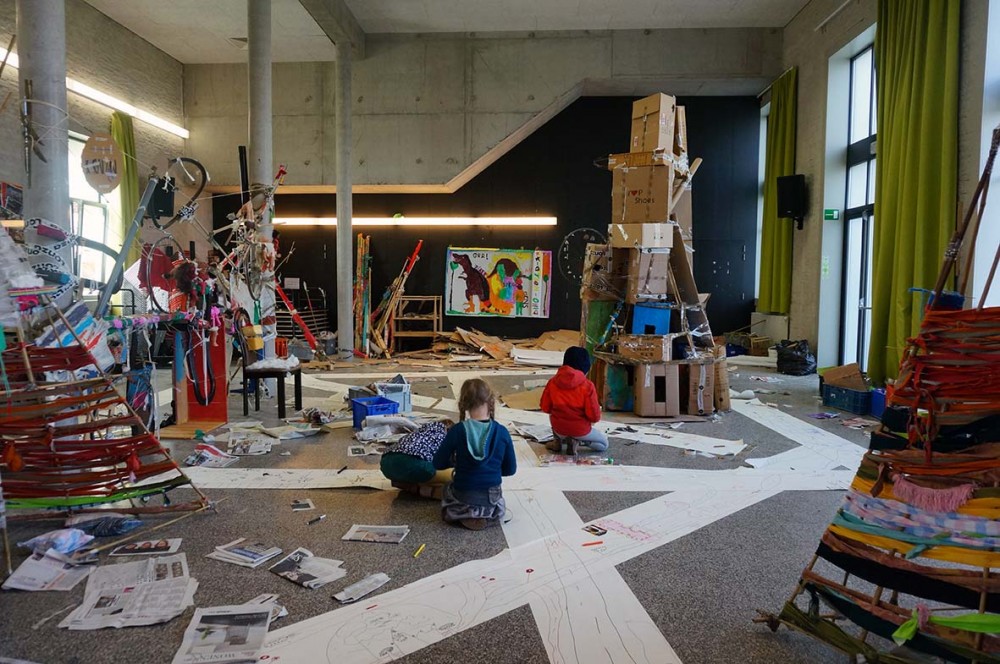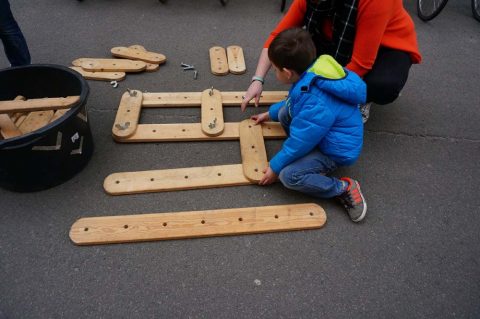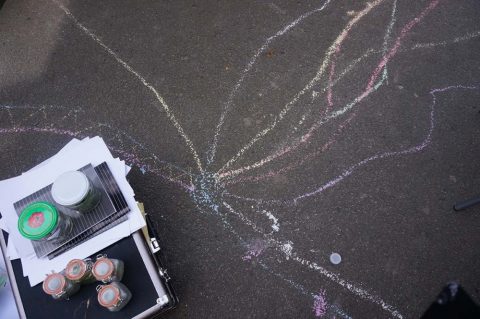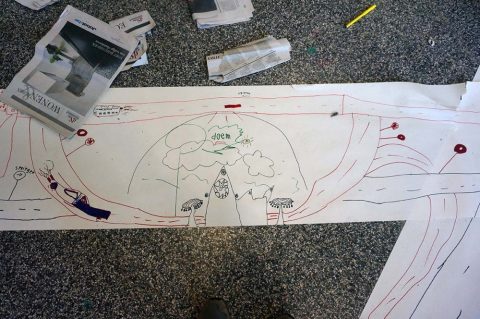Gangmakers & Koplopers help children explore, experience and imagine urban pathways

Gangmakers & Koplopers (Pace-setters & Front-runners) is a one-year pilot project currently running in various neighborhoods in Ghent, Belgium. During a series of playful art and design workshops, various groups of children explore, experience and imagine the meanings and values of urban pathways in relation to their daily life in the city.
Paths, trails, alleyways and back roads are key urban amenities, fostering the city’s accessibility and porosity. They enable citizens to explore, use and appropriate – both physically and symbolically – their surroundings. In addition, they have a special appeal for the city’s youngest citizens: unintended or inaccessible for car users, these ‘spaces of going/being/connecting’ constitute an essential public network for safe, autonomous use by children.
In 2014, Ghent was awarded the label ‘child-friendly city’, but the municipality’s policy makers do not see this as an end in itself. Rather, the award is viewed as an incentive for still more investment in steps to create an increasingly child and youth-friendly city. In the current plan, for example, the city does not only want to provide enough space for children to play. To be worthy of the ‘child-friendly’ badge, also means safeguarding the rights and interests of the most vulnerable children and young people.

Two local organisations, Trage Wegen and zZmogh and a design researcher from the Office for Public Play made the link between what constitutes a child-friendly city and the importance of ‘slow roads’ and ‘desire paths’. Together they initiated the ‘Gangmakers & Koplopers’ project. The project explores urban pathways as a fertile setting for informal and experimental behaviours in public space. This experiment blends participatory, play-based and artistic tools and settings enabling children to explore possible meanings of urban pathways in relation to their daily experience, access and appropriation of the city and its neighbourhoods.

Several sessions with children, aged 6 -12, are organized in various neighbourhoods in Ghent throughout the year; children participate in their free time. Some of the sessions take place in traffic-demarcated streets, which are part of local initiatives such as ‘speelstraat’ (play street) and ‘leefstraat’ (living street). Some sessions will contribute to developing a parade to be held in October 2016, when the children will introduce their ideas to a wide audience of citizens and visitors to the city. The tour will stop at different places and everyone will be welcomed to participate. Other sessions contribute to generating a collection of wishes, dreams, questions and concerns – about pressing issues, as well as more poetic proposals. The project encourages and facilitates dialogue between the children and related parties – such as policymakers and parents – about the issues that matter most to them.

The ‘Gangmakers & Koplopers’ project aims to be sustainable. During this initial pilot year new ideas are born for the second year, which will focus more in-depth on the ‘wish-list’ generated by the children; on how to transform the ‘wish-list’ in a ‘to-do’ list and how to make this happen, step-by-step with the help of local associations, neighbourhood committees and with the support from the city council. The project also hopes to inspire individual citizens and other cities.
 Author:
Author:
Annelies Vaneycken,
Office for Public Play
Child in the City 2016 Conference Speaker
Annelies Vaneycken her current doctoral work at HDK Academy of Design and Crafts (University of Gothenburg in Sweden) addresses and problematizes values of ‘play’ as approach for including children and young adults in participatory design processes working in/on public space. Her research project collaborates with and contributes to “Child Culture Design” a master program at HDK Academy of Design and Crafts with a specific focus on children and children’s culture, probes issues of participation and the influence of children and young adults on society.
Interested in hearing more on Annelies’ research? Join us at the Child in the City Conference in Ghent, Belgium on the 7-9 November!
More news
Children should travel independenly – A model for child friendly tranport
Studies show that children who are not allowed to travel independently have 35% less physical agility, 40% less physical balance, 15% less creativity and 47% less autonomy and endurance during work and the number of social contacts is less than 25%. The high volume of traffic has many negative mental and physical impacts on healthy… Read more ›
5 reasons why you should join the Child in the City Conference
Are you involved in education, research, urban planning or policy making? Do you advocate for children’s rights? Do you sustain a clean and friendly environment for children to play and develop? Then you are welcome to attend the 8th edition of the Child in the City Conference. The 8th edition of the Child in the City… Read more ›
How can children participate in urban planning? – Engaging children in decision making
It is not common practice to engage children into planning process. From the point of view of the researcher, however, the very fact that children are often ignored makes their perspective structurally very important. They are an intrinsic part of human society and each of them has a unique experience and a particular contribution to… Read more ›